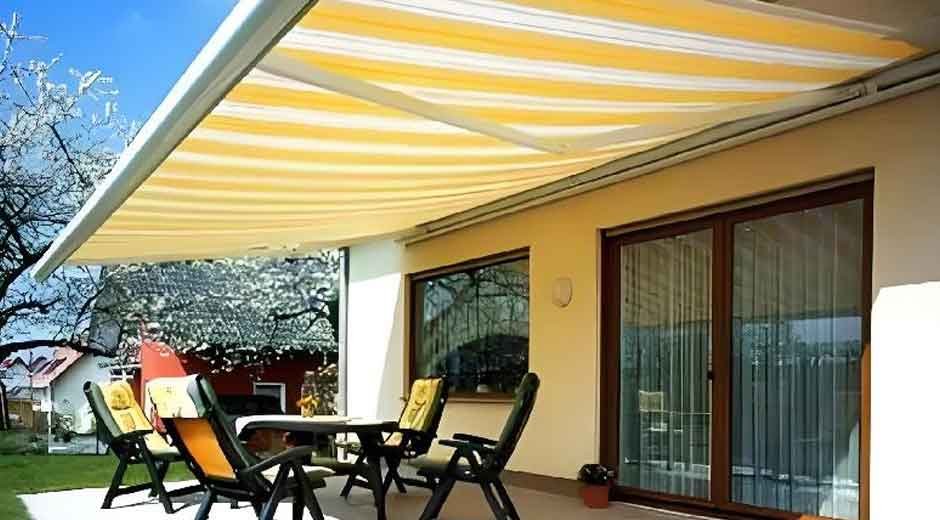When planning to purchase an awning for your home or business, one of the most important considerations is how to budget effectively. Awnings are not just shade solutions; they enhance comfort, improve aesthetics, and even contribute to energy savings. However, without proper planning, buyers may face unexpected expenses or overlook long-term costs tied to maintenance and installation. We will explore how to anticipate these financial factors, understand the range of options available, and prepare for the entire investment journey. By doing so, you can make decisions with confidence and avoid financial stress later.
Key Budget Considerations Before Buying an Awning
- Initial Cost of the Awning
The first factor to consider in your budget is the upfront purchase price. Awnings come in a wide variety of types, such as retractable, fixed, motorized, or manual, and each category carries a different price point. Materials such as aluminum, fabric, or steel also influence cost. For example, durable fabrics with weather-resistant coatings are often more expensive but last longer. Similarly, motorized awnings add convenience but come at a higher cost compared to manual designs. Prices also vary based on the size and customization of the awning, with larger installations requiring more materials and stronger support structures.
For buyers looking for awnings in Southampton, local suppliers may also affect pricing depending on availability and service options. When budgeting, it is important not only to compare models but also to evaluate how the chosen type aligns with your long-term use. By taking this approach, you avoid simply buying the cheapest option, instead ensuring that your choice provides value and durability.
- Installation Expenses
Beyond the price of the awning itself, installation costs form a significant part of the overall budget. Professional installation ensures that the structure is safe, functional, and compliant with any necessary building regulations. Costs can differ depending on whether your awning requires reinforcement of walls, roof brackets, or additional support systems. For retractable or motorized awnings, installation may involve electrical work, which adds to the final expense. Attempting to install without professional help may seem like a cost-saving measure, but incorrect setup can lead to damage, safety risks, or voided warranties. When preparing your budget, always factor in professional installation as an essential expense rather than an optional one. Doing so ensures peace of mind and extends the lifespan of your investment, saving you money over time.
- Maintenance and Upkeep
A common oversight when budgeting for an awning is ignoring the long-term costs associated with maintenance. Like any outdoor structure, awnings are exposed to weather conditions, dust, and general wear and tear. Fabrics may need periodic cleaning to prevent mold or fading, while frames may require inspections for rust or damage. Motorized units may also need servicing to keep their mechanical systems functioning smoothly. These tasks might seem small, but they accumulate over time, especially if neglected. Creating a maintenance schedule with estimated costs allows you to keep the awning in excellent condition without surprise expenses. For instance, professional cleaning services or replacement of fabric covers after years of use should be part of your financial plan. Factoring in these long-term considerations ensures you view the awning as a long-lasting investment rather than a one-time purchase.
- Energy Savings and Value Benefits
While awnings require an initial financial outlay, they can also provide significant savings over time. Properly placed awnings reduce solar heat gain inside your home or business, lowering air conditioning costs during warm months. Over several years, these energy savings can offset part of your initial expenses. Additionally, awnings add curb appeal, potentially increasing property value if you plan to sell in the future. When calculating your budget, it is worthwhile to include these benefits as part of the return on investment. Rather than seeing the purchase as purely a cost, recognize that well-chosen awnings offer financial and practical advantages that extend beyond shading. This perspective ensures you evaluate the purchase not just by what you spend, but also by what you save and gain in return.
- Customization and Additional Features
Many homeowners and businesses prefer awnings tailored to their specific needs, whether that means selecting unique fabrics, colors, patterns, or features like wind sensors and remote controls. While customization enhances the overall appearance and functionality, it also increases costs. For example, choosing high-quality UV-resistant fabrics or motorized systems with smart home integration adds convenience but raises the budget. It is important to weigh these enhancements carefully, distinguishing between features that genuinely add value and those that may be unnecessary luxuries. By prioritizing essential customizations while being mindful of optional upgrades, you can achieve a balance between functionality and affordability. This ensures your budget stays realistic without compromising on the benefits you seek from your awning.
- Warranty and Service Coverage
When budgeting, another important element to consider is warranty coverage. Awnings often come with guarantees for the frame, fabric, or motorized parts, but the length and scope of coverage vary. A comprehensive warranty can save you from costly repairs in the event of defects or early wear. However, products with extended warranties may come at a slightly higher upfront cost. It is worth factoring in this trade-off, as a reliable warranty can prevent unexpected financial burdens down the road. Additionally, some suppliers offer service packages that cover maintenance or repairs at discounted rates, which can be beneficial for long-term budgeting. Ensuring that warranty and service options are included in your planning helps protect your investment and provides reassurance that you are financially prepared for any issues that may arise.
Budgeting for an awning requires careful consideration of both immediate and long-term expenses. From the upfront cost of the product to installation, maintenance, and customization, each factor plays a role in shaping the total investment. By planning for warranties, service coverage, and even seasonal discounts, buyers can avoid financial surprises and enjoy peace of mind. In the end, a well-prepared budget ensures that your awning delivers comfort, style, and value without unnecessary financial strain.










